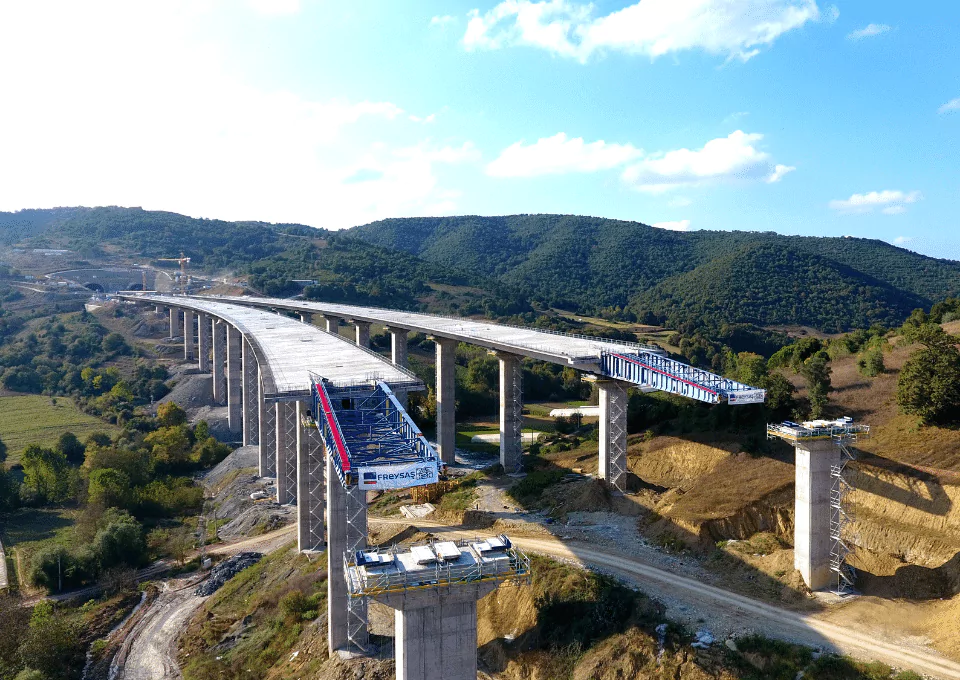
Environmental challenges
The Cayirköy viaduct, located next to Izmit city, on the Marmara Sea, is part of the Northern Marmara motorway. It is a large Turkish project of 431 km of highways in the Istanbul region which aims to ease the traffic flow in the congested Istanbul area and to link the western part of the country to the city and its new airport.
Due to the viaduct’s location in unpropitious geographical settings, the project’s major issues remained in the earthquake loads to be considered during construction, and the significant launching downhill, with a -2.8% slope.

